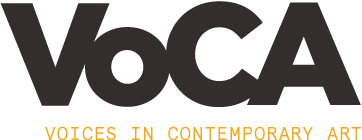Editor’s Note
Welcome to the Spring 2017 issue of VoCA Journal. In this issue, our contributors discuss the potential of archives as both repositories and raw material for artists.
David Senior (Senior Bibliographer at the Museum of Modern Art Library) chronicles the early days of Franklin Furnace through the historical photographs, correspondence, and printed matter preserved in the archive of the artist-run space that flourished in a storefront loft in Tribeca during the second half of the 1970s and beyond. Inspired in part by the artist residency and publishing program at the Nova Scotia College of Art and Design in Halifax, Franklin Furnace provided a platform for performances and the distribution of “book-like works by artists,” many of which were made by women.
The recent publication of Donald Judd Writings is the subject of my interview with Flavin Judd (Co-Director and Curator of Judd Foundation) and Caitlin Murray (Director of Marfa Programs at Judd Foundation). Judd Foundation preserves Donald Judd’s permanently installed living and working spaces, libraries, and archives in both New York and Marfa, Texas. Judd and Murray explain that the new volume of Donald Judd’s writings includes a nearly comprehensive selection of his texts, from early pieces representing student work to his last essay, “Some Aspects of Color in General and Red and Black in Particular,” written in 1993. The volume also includes hundreds of previously unpublished notes that provide insight into Donald Judd’s thinking process and were often the genesis for longer, more developed essays.
Members of a cross-departmental team at New York University discuss their David Wojnarowicz Knowledge Base project, which has developed under the auspices of the Artist Archives Initiative at NYU. In the course of a roundtable conversation, Glenn Wharton (Associate Professor of Museum Studies), Deena Engel (Professor in the Department of Computer Science and Director of the Program in Digital Humanities and Social Science) and Marvin Taylor (Director of Fales Library and Special Collections) highlight the importance of information and social networks when documenting the legacy of an artist like Wojnarowicz. They also explain the ways that their various skill sets – technical knowledge, archiving experience, and conservation expertise – have combined to create a flexible, artist-centered resource available to curators, conservators, scholars, and students.
An essay by Tanya Zimbardo (Assistant Curator of Media Arts at San Francisco Museum of Modern Art) explores how Runa Islam’s work continually engages with the histories of cinema. In addition to presenting film installations in exhibition gallery contexts, Islam showcases the sculptural qualities of the tools of filmmaking. Confronted with the disappearance of the analog film supplies and processing labs she relied upon for her work, Islam mined silver from decommissioned film stock, then cast the silver in the form of the 16 mm camera lens she had used to shoot the majority of her projects. Investigating the notion of the archive in novel ways, she created a piece that simultaneously embodies “a corpus of film, a body of time, and a body of images.”
Robin Clark


